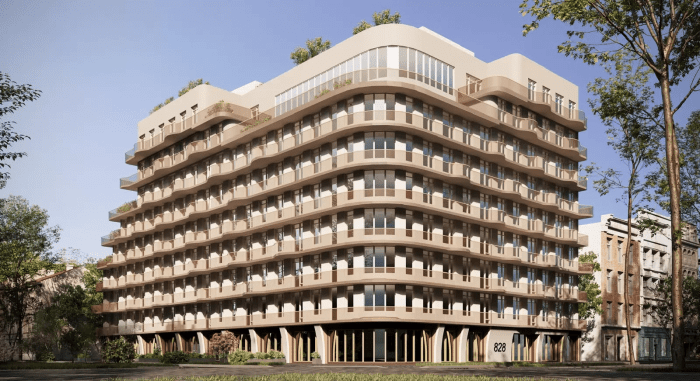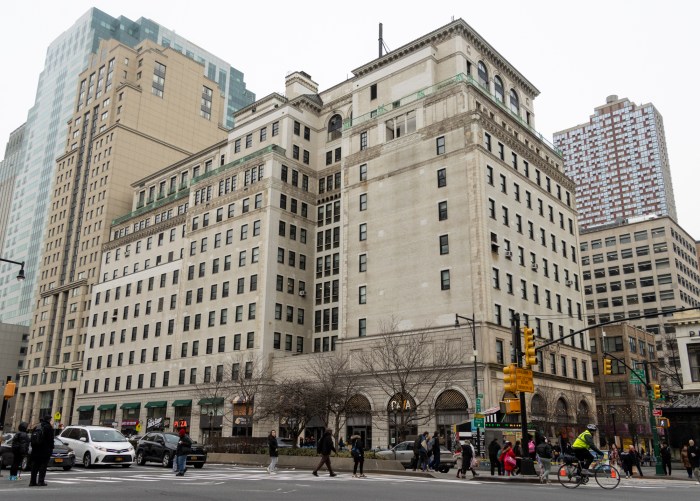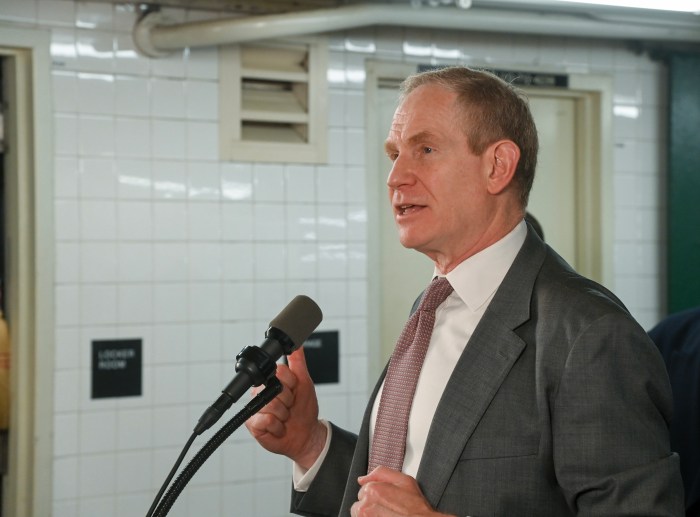The city is missing a once-in-a-lifetime opportunity to protect Coney Island from future superstorms, locals complained at the Oct. 17 meeting of Community Board 13’s environmental and resiliency committee.
The city’s $47-million plan to rebuild part of the wall protecting the shoreline of Coney Island Creek against sea-level rise and storm surges is only designed to defend the neighborhood from flooding in routine storms, not another Hurricane Sandy, according to the senior project manager, who presented the plans at the meeting.
“The big reasoning behind this project is to deal with the high-frequency-occurring storms — not the once-in-a-lifetime Sandys,” said Wil Fisher, of the Economic Development Corporation, the agency spearheading the project.
But the massive project — which is intended to repair damage wrought by the 2012 superstorm — will only benefit the whole neighborhood if it can mitigate future catastrophic flooding, according to one local at the meeting.
“It’s only going to be for the shoreline, it’s not going to protect against another Sandy,” said Armines Hudson. “How is it going to work for the community if it’s only for the shoreline?”
Reps from the city’s Economic Development Corporation and the Mayor’s Office of Recovery and Resiliency presented details of the plan, which they did not previously disclosed to the community board since releasing the July 29 request for proposals on the agency’s website.
The project will rebuild the bulkhead — a vertical wall that reinforces the banks of the waterway — along the creek from Cropsey Avenue to W. 23rd Street, the reps said, adding that they chose to focus on that stretch because that’s where land elevation was the lowest and the bulkhead was most deteriorated.
The work is part of a larger strategy to improve resiliency in the neighborhood following Hurricane Sandy, according to a spokesman from the agency, who said the bulkhead project was first identified in the agency’s Coney Island Creek Resiliency study, released in 2016.
The Economic Development Corporation will allocate $32 million in city funds for the project, and the federal Housing and Urban Development Department will provide another $15 million from the disaster-recovery grant it allocated to the city after the superstorm.
The project will raise the bulkhead to a maximum of 32 inches above its current height, depending on the grade of the surrounding streets and the recommendation of the city Panel on Climate Change, the reps said.
The reps — including Economic Development Corporation project manager Daniel Fletcher and policy advisor for coastal resiliency in the Mayor’s Office of Recovery and Resiliency Samuel Hersh — said other state and federal agencies have their own projects on the horizon to help further fortify the neighborhood against future superstorms, such as the state Department of Environmental Protection’s drainage work in the area and the U.S. Army Corps of Engineers’ proposal to install a five-mile floodgate from Breezy Point to Sandy Hook.
But one local said that she doubts there will a floodgate while she’s still breathing, and that the neighborhood needs greater flood protection now.
“The five-mile-long floodgate is in my ‘when pigs will fly’ category,” said Ida Sanoff. “Realistically speaking, I’m 66-years-old, I don’t think there will be a five-mile-long floodgate from Breezy Point to Sandy Hook in my lifetime.”
But Fisher said larger-scale flood protection projects inevitably have long time horizons, and that improving the creek’s bulkhead will benefit the neighborhood in the near term.
“We recognize there isn’t one silver bullet that can solve all of these problems,” Fisher said. “Some of the greater-volume flood protection, that’s kind of a longer-term project.”
The Economic Development Corporation expects construction on the bulkhead to begin in 2020 and wrap up two years later, the reps said, adding that the agency plans to finalize its decision on a contractor for the project by next spring.

















